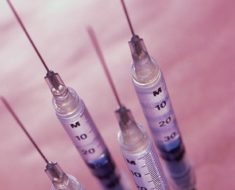
A standard test that assesses blood cells can identify which patients who are admitted to the hospital with COVID-19 face a high risk of becoming critically ill and dying. This discovery, which is described in JAMA Network Open, was made by a team of investigators at Massachusetts General Hospital (MGH) based in the MGH Center for Systems Biology.
“We wanted to help find ways to identify high-risk COVID patients as early and as easily as possible—who is likely to become severely ill and may benefit from aggressive interventions, and which hospitalized patients are likely to get worse most quickly,” said senior author John M. Higgins, MD, an investigator in the Department of Pathology at MGH and an associate professor of Systems Biology at Harvard Medical School (HMS).
Higgins noted that early reports from China indicated that the body’s inflammatory response was extremely intense in some patients and very mild in others. His own group’s previous work revealed that certain changes in the numbers and types of blood cells during inflammation are associated with poor health outcomes in patients with diseases such as heart disease, cancer, and diabetes. “We quickly re-focused our computational infrastructure towards analysis of the COVID-19 patient cohort that was growing rapidly in the Boston area last spring,” explained first author Brody Foy, DPhil, a eesearch fellow in Systems Biology at MGH and HMS.
Their analysis included all adults diagnosed with SARS-CoV-2 infection and admitted to one of four hospitals in the Boston area between March 4 and April 28, 2020. Before looking for complicated changes in circulating blood cells in the 1,641 patients included in the study, the scientists first searched for patterns using currently available blood tests that are routinely performed. “We were surprised to find that one standard test that quantifies the variation in size of red blood cells—called red cell distribution width, or RDW—was highly correlated with patient mortality, and the correlation persisted when controlling for other identified risk factors like patient age, some other lab tests, and some pre-existing illnesses,” said co-author Jonathan Carlson, MD, Ph.D.
Patients who had RDW values above the normal range when they were admitted to the hospital had a 2.7-times higher risk of dying, with a mortality rate of 31 percent compared with 11 percent in patients with normal RDW values. Also, a subsequent increase in RDW after admission was associated with an even higher risk of dying, indicating that RDW could be tracked during hospitalization to help determine whether patients are responding to treatment or getting worse.
Source: Read Full Article





